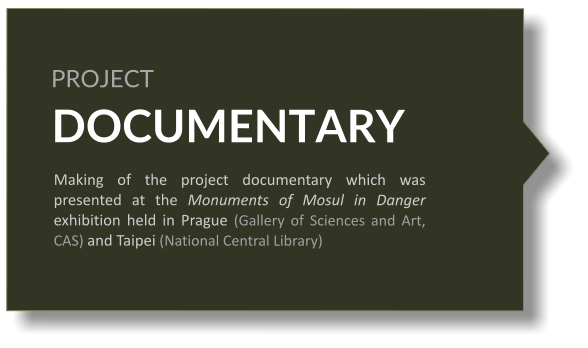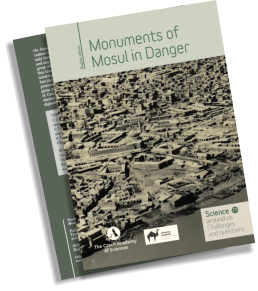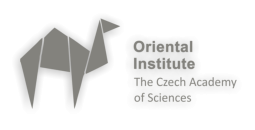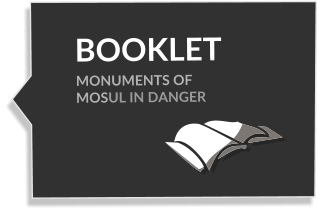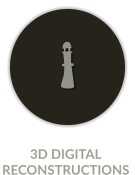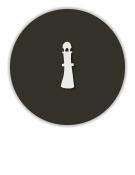
TEAM
Karel NOVÁČEK
Palacký University Olomouc,
Department of History
Archaeologist and historian of
architecture specializing in the
medieval built environment, both
in central Europe and the Near
East
Miroslav MELČÁK
Oriental Institute, The Czech Academy
of Sciences, Prague
Historian specializing in the social
and cultural history of the Middle
East. His main research areas are
Islamic urbanism and historical
topography of the North
Mesopotamian region
Lenka STARKOVÁ
University of West Bohemia Plzeň,
Department of Archaeology
Archaeologist specializing in
remote sensing, analysis of
satellite imagery, airborne laser
scanning, and GIS
Ondřej BERÁNEK
Oriental Institute, The Czech Academy
of Sciences, Prague
Historian specializing in the history
of Islam, particularly its Salafi and
Wahhabi interpretations. His
current research focuses on the
Salafi view of iconoclasm





Nyx ALEXANDER



Nyx Alexander Design ®
Digital designer and graphic artist
specializing in virtual, three
dimensional reconstructions and
visualizations of historical
architecture




Loading











a) Monitoring destructive activities in Mosul by means of satellite imagery
b) Identification of destroyed sites
c) Creation of an interactive map of destroyed monuments
Architectural
and
historical
analysis
of
destroyed
monuments
by
means
of
preserved
visual
(photographs,
documentary
films)
and
plan
documentation
as
well
as
historical
and
recent
descriptions published by both Iraqi and Western scholars
Creation
of
3D
virtual
models
of
monuments
for
which
documentation
of
sufficient
quality has been preserved
Analysis
of
the
ideological
background
of
the
destruction
(IS’s
religious
propaganda
and rationale, historical precedents)




© 2021 Oriental Institute, The Czech Academy of Sciences






















The
project
Monuments
of
Mosul
in
Danger—supported
by
the
Oriental
Institute,
The
Czech
Academy
of
Sciences
in
Prague,
and
the
research
program
Strategy
AV21
of
The
Czech
Academy
of Sciences—was
launched
in
reaction
to
a
serious
threat
to
Mosul’s
architectural
sites
from
the
Islamic
State
(IS,
Daesh),
who
controlled
the
town
from
June
2014
to
July
2017.
During
these
three
years,
more
than
40
historical
sites
were
deliberately
damaged
or
completely
razed
to
the
ground.
Monuments
of
diverse
types,
such
as
mosques,
shrines,
mausolea,
churches, and cemeteries, were subject to destruction.
Mosul’s
architecture
has
only
been
marginally
researched.
The
first
and
only
systematic
survey
of
Islamic
and
Christian
monuments
in
the
town
was
conducted
by
the
German
archaeologist
Ernst
Herzfeld
in
1907–1908.
To
this
day,
his
work
surpasses
all
other
research
on
the
topic,
both
in
its
scope,
and
the
quality
of
its
individual
analyses
and
documentation.
Although
Mosul’s
architecture
was
of
interest
to
many
Iraqi
scholars
(notably
Ahmad
al-Sufi,
Saʽid
al-Diwahji,
and
Ahmad
Qasim
al-Jumʽa),
the
textual
component
of
their
research—though
often
of
high
quality—was
seldom
accompanied
by
sufficient
quality documentation.
Therefore,
when
the
Islamic
State
began
the
systematic
destruction
of
monuments
in
Mosul,
we
could
only
guess
what
the
real
architectural
and
historical
value
of
the
destroyed
heritage
might
be.
The
Monuments
of
Mosul
in
Danger
project
seeks
to
fill
this
gap
by
systematically
researching
the
destroyed
heritage
through
preserved
documentation
and
critically
re-
evaluating its significance in the context of the city’s urban development.
The
focus
of
this
project
is
only
on
monuments
that
were
intentionally
destroyed
by
the
Islamic
State.
As
for
those
monuments
that
were
destroyed
as
a
result
of
collateral
damage
during
the
military
operation
for
the
liberation
of
Mosul, an overview is given in a separate map layer of the Story Map.
Web design by Nyx Alexander Design ®


•
Narrates the course and circumstances of the systematic destruction of monuments of
Mosul by ISIS and, through analysis of its religious propaganda, places its actions in the
broader framework of radical Jihadi Salafism





•
Introduces the sources and methods of working with data obtained through remote
sensing (satellite and aerial imagery) and discusses their usability for the archaeological
research of Mosul’s urban landscape
•
Presents the comprehensive catalogue of all destroyed monuments with thorough
architectural and historical analyses of those with sufficiently preserved documentation
•
Reconsiders the city’s urban development from its foundation in 641 to the 15th century on
the basis of a critical revision of historical topographic data
•
Revises some deep-rooted interpretations of the patronage and meaning of Mosul’s
medieval architecture



